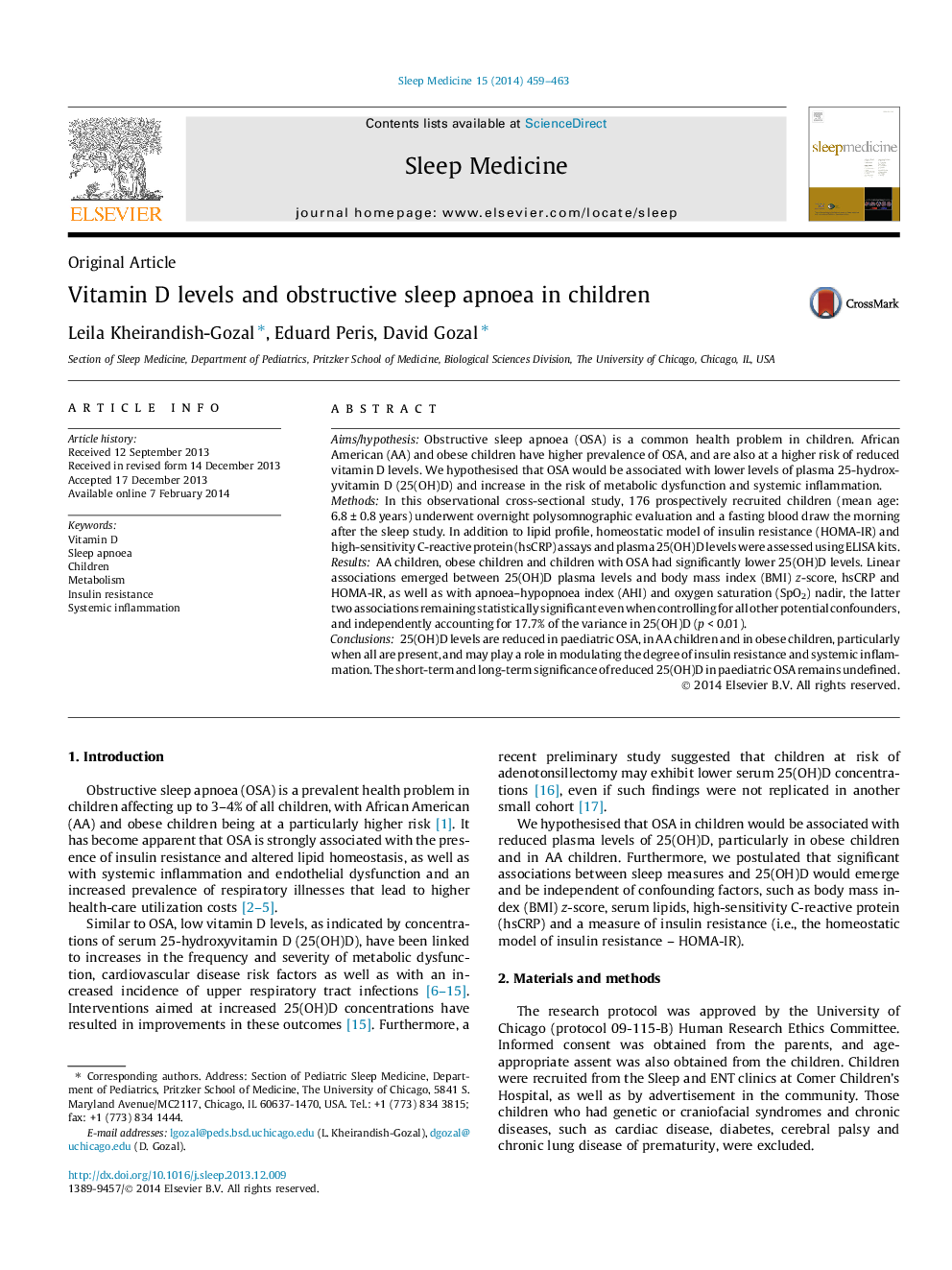| Article ID | Journal | Published Year | Pages | File Type |
|---|---|---|---|---|
| 3176150 | Sleep Medicine | 2014 | 5 Pages |
•Low vitamin D levels are associated with adverse outcomes in systemic inflammatory diseases.•Obstructive sleep apnea in children is a low-grade systemic inflammatory disease.•We found that vitamin D levels are reduced in pediatric OSA, particularly in obese children.•Vitamin D levels account for a proportion of the variance in insulin resistance pediatric OSA.
Aims/hypothesisObstructive sleep apnoea (OSA) is a common health problem in children. African American (AA) and obese children have higher prevalence of OSA, and are also at a higher risk of reduced vitamin D levels. We hypothesised that OSA would be associated with lower levels of plasma 25-hydroxyvitamin D (25(OH)D) and increase in the risk of metabolic dysfunction and systemic inflammation.MethodsIn this observational cross-sectional study, 176 prospectively recruited children (mean age: 6.8 ± 0.8 years) underwent overnight polysomnographic evaluation and a fasting blood draw the morning after the sleep study. In addition to lipid profile, homeostatic model of insulin resistance (HOMA-IR) and high-sensitivity C-reactive protein (hsCRP) assays and plasma 25(OH)D levels were assessed using ELISA kits.ResultsAA children, obese children and children with OSA had significantly lower 25(OH)D levels. Linear associations emerged between 25(OH)D plasma levels and body mass index (BMI) z-score, hsCRP and HOMA-IR, as well as with apnoea–hypopnoea index (AHI) and oxygen saturation (SpO2) nadir, the latter two associations remaining statistically significant even when controlling for all other potential confounders, and independently accounting for 17.7% of the variance in 25(OH)D (p < 0.01).Conclusions25(OH)D levels are reduced in paediatric OSA, in AA children and in obese children, particularly when all are present, and may play a role in modulating the degree of insulin resistance and systemic inflammation. The short-term and long-term significance of reduced 25(OH)D in paediatric OSA remains undefined.
